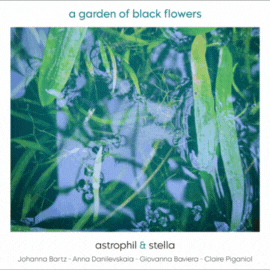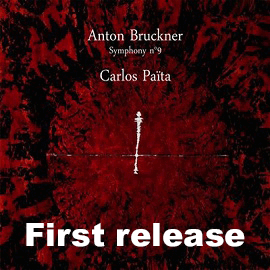Das Booklet dieser CD enthält das Gemälde Ad Marginem von Paul Klee. Es bezieht sich auf die Flora und Fauna, die am Rande wächst, während eine dunkelrote Sonne die Mitte bestimmt. Man mag dieses Gemälde, das sich einer einfachen Deutung verschließt, hier so sehen, dass das Trio von Rachmaninov die leuchtende Sonne darstellt, während die anderen Werke wie die Pflanzen oder Tiere am Rande erscheinen, zumindest was ihr Erscheinen im Konzertbetrieb angeht. Die beiden Sätze von Casella, aus der Version für Flöte und Klavier um die Cellostimme erweitert und die hohe Stimme auf die Violine übertragen, formen die eine Ecke, während die andere von Akatombo von Koscak Yamada belegt ist (auch als Yamada Kosaku bekannt). Er hat er das Gedicht Rote Libelle, japanisch Akatombo, von Miki Rofu vertont, das jeder Japaner in der Schule lernt. Es wird hier in Deutsch und Japanisch vorgetragen, bevor die musikalische Umsetzung erklingt.
Das umfangreiche und tiefgründige Trio von Rachmaninov, seine Reaktion auf den Tod von Tchaikovsky, ist die zentrale Komposition dieser Einspielung. Mit einem emotional gefärbten Ansatz präsentieren die drei Künstler des Talistrio, das Geschwisterduo und der japanische Cellist, dieses Werk. Mit aufwallender Energie wie mit zurückgenommener Innerlichkeit zeigen sie die starken Gefühle, die Rachmaninov bei der Komposition geprägt haben mögen. Während sie ruhige Passagen auch in der Tongestaltung wunderbar einfühlsam gestalten, spielen sie manch dynamischere Komponente durchaus aufgeraut. So lassen sie ungehemmt die Trauer über den Tod von Tchaikovsky erkennen.
Das kurze Werk von Casella, das gegenüber der Flötenversion einen festeren Klang hat, betonen sie durch ihren ungestümen Zugriff sowohl die Dissonanzen der Sicilienne wie auch das Groteske der Burlesque. In dieser eigenständigen Tonsprache hört man im ersten Satz die Nähe zu Stravinsky, im zweiten mag man bei der neoklassischen Schreibweise das zweite Trio von Shostakovich oder auch Johann Sebastian Bach durchschimmern hören.
Bei der Roten Libelle führt Yamada seine beiden kulturellen Hintergründe zusammen. Ausgebildet in Tokio und auch in Deutschland etwa bei Max Bruch, gibt er dem Gedicht eine feine Sprache, die die schwebende Zerbrechlichkeit des Gedichtes widerspiegelt. Es ist eine nostalgische Darstellung einer japanischen roten Libelle, die ein Säugling bei Sonnenuntergang sieht, der von seiner Schwester getragen wird, wird von dem Trio, dessen Mitglieder aus den beiden Kulturkreisen stammen, mit der erforderlichen Delikatesse dargeboten.
The booklet of this CD contains the painting Ad Marginem by Paul Klee. This refers to the flora and fauna growing on the edge, while a dark red sun defines the center. One might think that Rachmaninov’s trio is representing the luminous sun, while the other works seem like the plants or animals on the edge, at least in terms of their appearance in concert. The two movements by Casella, expanded from the version for flute and piano to include the cello part and the high voice transferred to the violin, form one corner, while the other is occupied by Akatombo by Koscak Yamada (also known as Yamada Kosaku). He set to music the poem Red Dragonfly, japanese Akatombo, by Miki Rofu, which every Japanese learns in school. It is recited here in German and Japanese before the musical realization is heard.
Rachmaninov’s extensive and profound trio, his reaction to the death of Tchaikovsky, is the central composition of this recording. With an emotionally colored approach, the three artists of the Talistrio, the sibling duo and the Japanese cellist, present this work. With surging energy as well as withdrawn inwardness, they demonstrate the strong emotions that may have informed Rachmaninov’s composition. While the quiet passages are also wonderfully sensitive in their tonal shaping, they play some of the more dynamic components in a roughened manner. For example, they uninhibitedly reveal the grief over Tchaikovsky’s death.
Casella’s short work, which has a firmer sound than the flute version, they emphasize both the dissonances of the sicilienne and the grotesque of the burlesque through their impetuous approach. In this independent tonal language, one hears the proximity to Stravinsky in the first movement; in the second, one might hear the second trio of Shostakovich or even Johann Sebastian Bach shimmering through in the neoclassical writing.
In the Red Dragonfly, Yamada brings together his two cultural backgrounds. Trained in Tokyo and also in Germany with Max Bruch, for example, he gives the poem a delicate language that reflects its floating fragility. It is a nostalgic depiction of a Japanese red dragonfly seen by an infant at sunset, carried by its sister, is performed with the necessary delicacy by the trio, whose members come from the two cultural backgrounds.

























